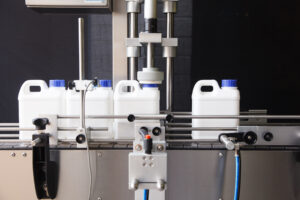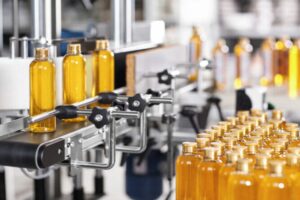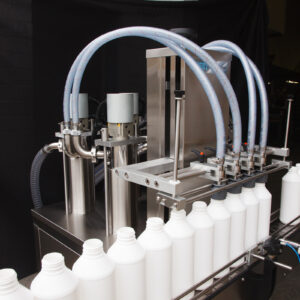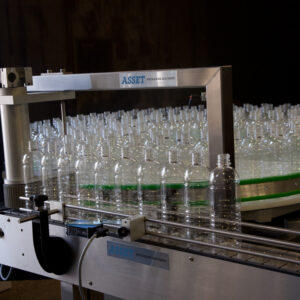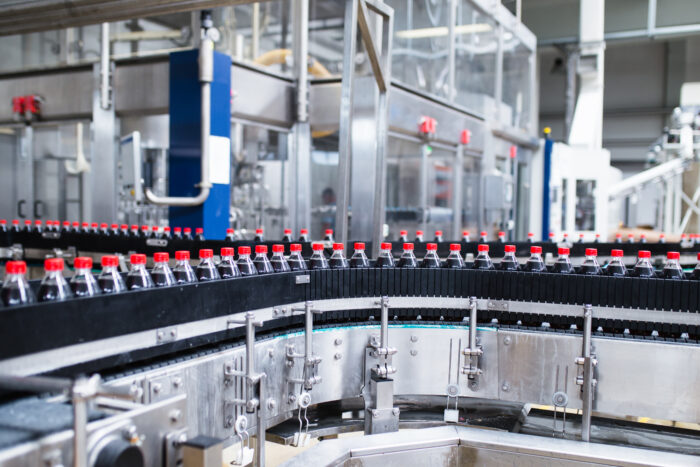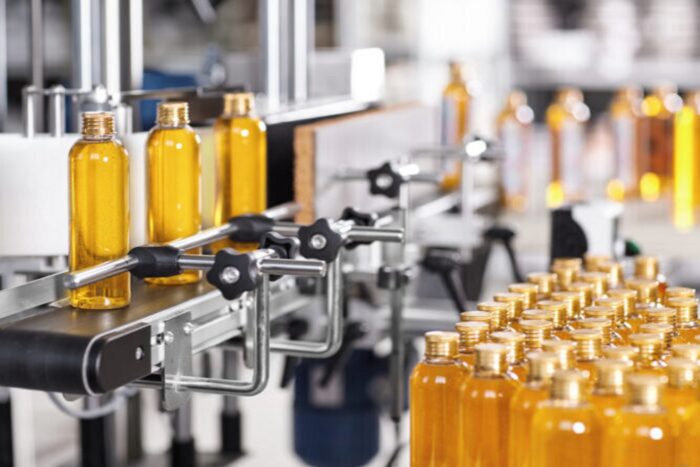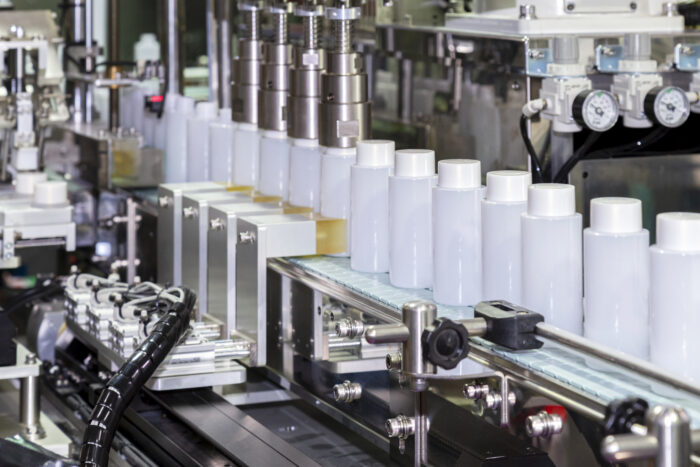Having been a fixture on the manufacturing market since the early 20th century when the mechanical age began, liquid filling machines can make production seamless and consistent for products where agitation, stability and foaming are an issue. With a huge range of food, medical and cleaning goods in premium demand now, it pays to look into the most cost-effective way to deliver your products to market using currently available systems.
Liquid filling machines have evolved over the years to introduce less labour intensive mechanical processes and greater automation that serves multiple purposes simultaneously. If you are a proprietor in cleaning, food and beverage, pharmaceutical and health science fields and have not yet seen the benefits to your bottom line from installing these machines, read on to learn where they can take your business.
History of Liquid Filling Machines in Manufacturing
The earliest liquid filling machine models operated on a rotor belt system where liquid was inserted into fixed-line bottles or containers at pre-set rates. But today, with developments in technology, timed flow machines can deliver better accuracy for insertion without losing time or quality product on the production line. This is especially important for products where temperature control processes and stability are in issue – think beer brewing, baby food bottled products, and food products for supermarket and warehouse distribution within defined use-by times.
The technology behind liquid filling machines has evolved from initial bulky manual systems developed in the early 20th century filling single-layer materials, to semi-automatic machines across expanding product lines throughout the economic boom of the mid-20th century with the explosion in consumer goods manufacturing, and now to digital and technological advances in the 21st century allowing fully automatic filling machines that can switch between product lines and maintain consistency with minimal loss of product.
With the emergence of new technologies today, the automatic liquid filling market in 2020 had a valuation of USD $2414.95 billion. By 2026, this is expected to grow to USD $3624.19 billion.
Where Liquid Filling Technology Can Take Your Business
With their capability to change production lines between products and the ability to combine versatile designs with technological know-how, new model filling machines can maximise output, reduce contamination and product loss through soiling, and streamline cleaning and hygiene processes.
Semi-automated machines are faster and more accurate than manual machines and can fill a range of container sizes for similar products. They have proven extremely useful in production businesses focused on heavy liquid or semi-inert liquids like food and beverage, cleaning and health sciences. However, these machines still require some human interaction to ensure quality and content spillage is reduced.
Fully automatic machines can change production lines between products, making them versatile for businesses looking for greater efficiencies. They can handle viscous liquids, semi-solids and pastes, all without changing the setup. New innovations incorporating nozzles, caps and fill lines for greater automation, higher precision and easier cleaning in production also mean that manufacturers can modify production and increase capacity at acceptable costs.
Less Labour Intensive Processes Allow for a Skilled workforce
Nowadays, where demand for pre-packaged and readily available goods is at a premium, it’s vital to have suitable manufacturing processes in play for your business to increase product output and decrease manual labour costs. One of the great advantages liquid filling systems offer in our current production age has come about through the advances of digital technology seen over the past 25 years, which also reduces the need for an unskilled workforce.
Using coding systems means your production line can switch between multiple product ranges without excessive system changes or downtime. Net weight technology means that multiple product lines can be filled using the same machinery range – giving consistent and accurate product levels each time. Programmable logic controllers assist with consistent flow rates and fill lines. This is especially important where regulations and use-by timelines control the production process from manufacture to sale.
Also, seeing the impact of recyclables in this sector through the development and acceptance by consumers of innovative packaging ranges means that liquid filling machines can move products quicker through the output process.
Australian-made machines also have the capacity to vary attachments or extensions on the filling line – think nozzles, gun fillers, neck grips and hoppers to improve accurate filling lines. Using a machine designed to provide multi-lane fillers also increases production capacity in stable products where overspill isn’t an issue.
Liquid filling machines will improve your operational efficiency, labour force scale and skilled workforce balance in the short term. They can also boost your productivity and profits in the long term. And cleaning and hygiene processes are made easier and safer with reduced product buildup in the filling process and improved draining designs allowing quicker turnaround times between multiple product lines on a standard filling machine installation with bowl and tank drainage options.
All these improvements in liquid filling machine technologies mean that your manual labour operations are reduced as inputting of processes used to fill content in production has been superseded. This frees up your workforce to engage in higher-end tasks and provide skilled assistance to the production process.
Evaluating Liquid Filling Machine Costs in Production

It’s also relevant to consider operational costs, as the evolution of the liquid filling machine market has seen some great advances. In prior iterations, the accepted business model to install a machine line was for outright purchase and consequent maintenance upkeep from the supplier. With technology changes since the turn of the 21st century, there is a current argument for manufacturing machines to be treated as a service or through leasing options.
While machinery as a service can deliver strong results and reduce operational costs, it may be more suitable for larger enterprises with scale. For those considering a semi-automatic or smaller installed line, think about a more traditional arrangement of renting the machine – the ‘try before you buy’ option.
Lease or Buy with Asset Packaging Machines: Either Way You Win
Asset Packaging Machines is an Australian manufacturer of high-quality liquid filling machines, catering to businesses of all sizes and production capacities. We have a number of leasing and sale options across our semi and fully automatic liquid filling product range to suit SME businesses. Either way, it’s a win-win for your business.





